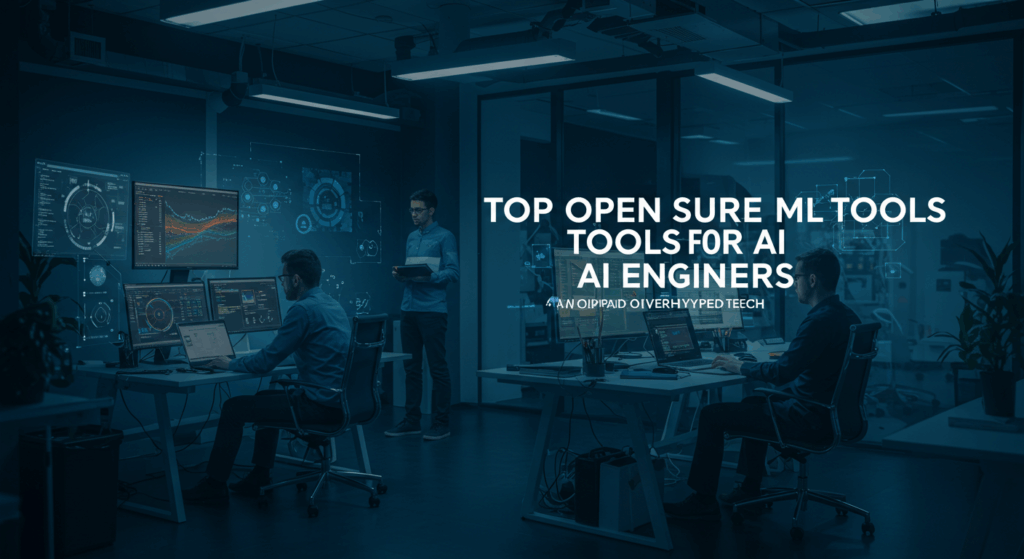
Artificial intelligence engineers rely on a robust toolkit of machine learning (ML) frameworks and platforms to build, train, and deploy models. In a fast-evolving field, using the right tools can dramatically improve productivity and model performance. This article highlights 10 of the best free and open-source ML tools that every AI engineer should know – from industry-standard giants to promising emerging technologies. For each tool, we explain what it is, why it’s valuable, and the use cases it fits best. We’ll also briefly discuss a few overhyped tools/tech to be cautious about. Let’s dive in.
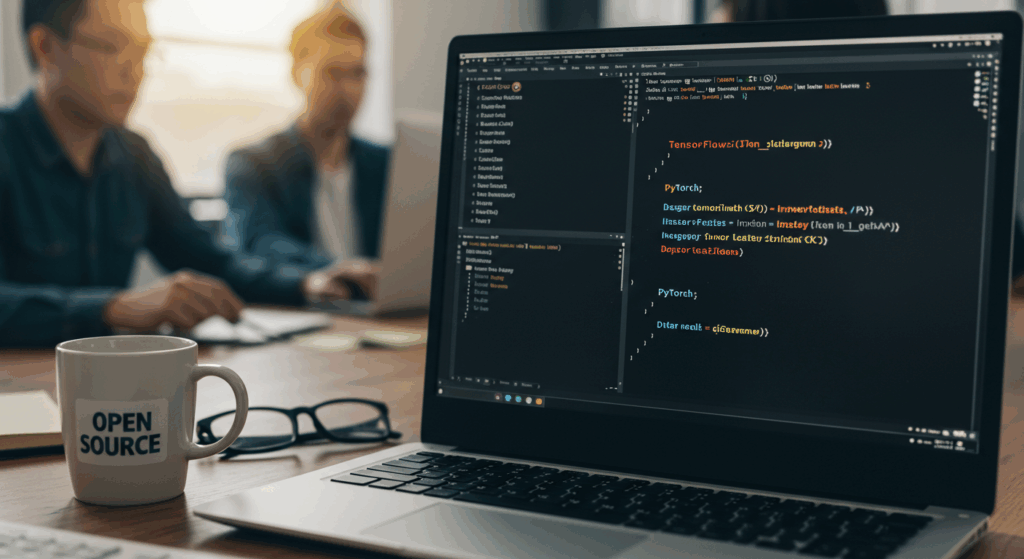
1. TensorFlow
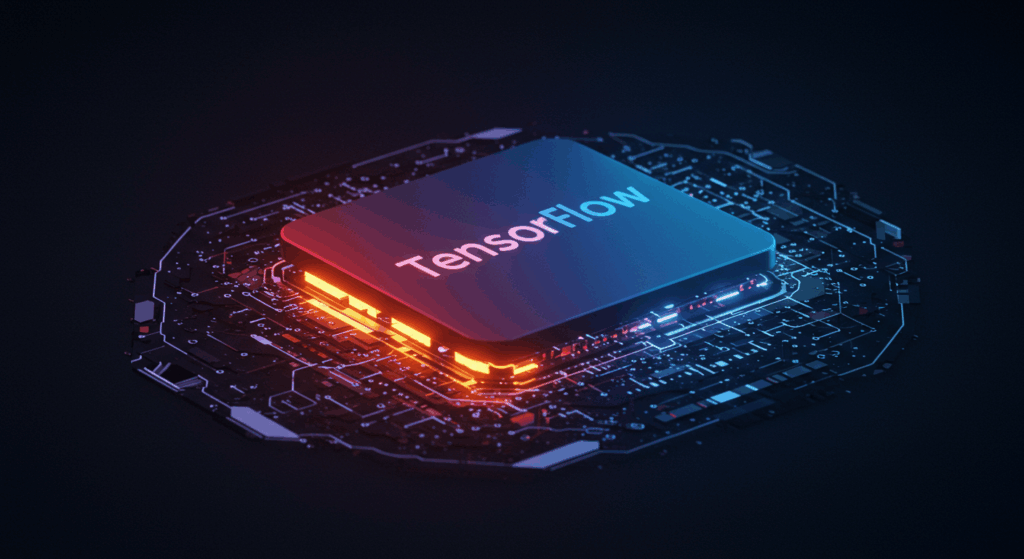
What it is: TensorFlow is an end-to-end open-source machine learning platform developed by Google. Released in 2015, it provides a comprehensive ecosystem of libraries and tools for building and deploying ML models. TensorFlow supports calculations on CPUs, GPUs, and TPUs, and it has APIs for Python (its primary interface) as well as C++, JavaScript, and other languages (Top 10 Open Source AI tools in 2024) (A Comprehensive Comparison of the Best Machine Learning Frameworks for – Logics Technology Solutions Inc).
Why it’s valuable: Backed by Google, TensorFlow benefits from a large community, abundant resources, and a flexible, production-ready architecture. It remains a popular choice due to its robust ecosystem (e.g. TensorFlow Hub, TensorBoard) and extensive community support (A Comprehensive Comparison of the Best Machine Learning Frameworks for – Logics Technology Solutions Inc). TensorFlow excels at scaling across distributed systems, making it ideal for training deep neural networks on large datasets. It also incorporates Keras as its high-level API, which greatly simplifies model development and experimentation.
Best suited for: TensorFlow is especially good for deep learning applications in computer vision, natural language processing (NLP), and any scenario requiring production-grade model deployment. Companies often use TensorFlow for large-scale projects since it’s designed for performance in production environments (serving models, mobile deployment via TFLite, etc.). For example, TensorFlow’s powerful model-building capabilities make it a go-to in data-heavy fields like healthcare and finance (A Comprehensive Comparison of the Best Machine Learning Frameworks for – Logics Technology Solutions Inc). Beginners can start with high-level Keras APIs, while advanced users can dig into TensorFlow’s lower-level operations for maximum control.
2. PyTorch
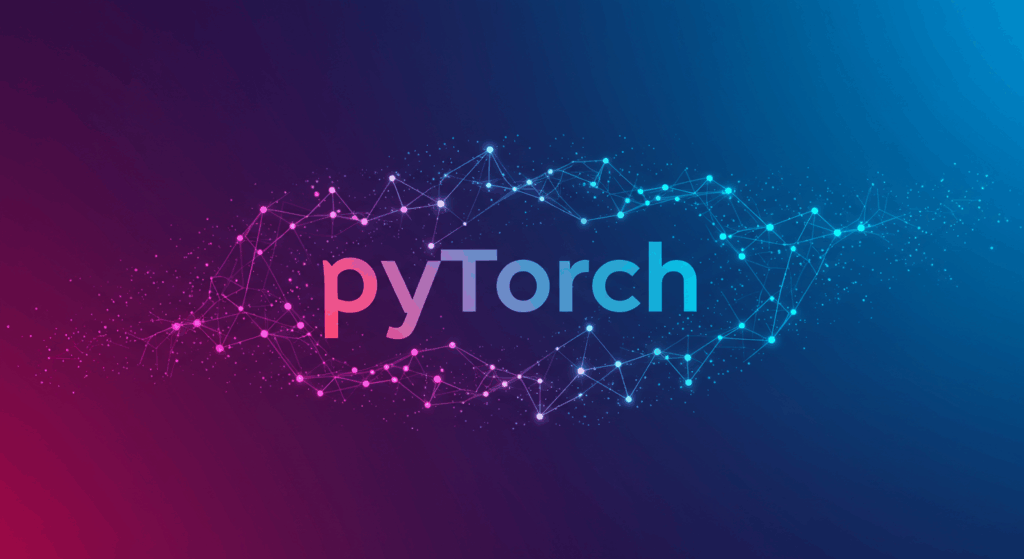
What it is: PyTorch is a popular open-source deep learning framework initially developed by Facebook’s AI Research lab. It is known for its dynamic computation graph, which allows neural network computations to be defined on the fly (imperative style) rather than as a static graph. PyTorch is implemented primarily in Python (with C/C++ backend for performance) and integrates tightly with the Python scientific computing stack (Top 10 Open Source AI tools in 2024).
Why it’s valuable: PyTorch has rapidly gained traction for its intuitive design and ease of use (A Comprehensive Comparison of the Best Machine Learning Frameworks for – Logics Technology Solutions Inc). The dynamic graph approach makes debugging and developing models more straightforward, since engineers can use standard Python control flow and tools. PyTorch also offers strong GPU acceleration and a growing ecosystem (TorchVision for vision, TorchText for NLP, etc.). It is widely used in research – many academic papers and cutting-edge models are implemented in PyTorch – but it’s also now common in industry. The framework’s flexibility and Pythonic feel make it ideal for rapid prototyping of new model architectures (A Comprehensive Comparison of the Best Machine Learning Frameworks for – Logics Technology Solutions Inc). A vibrant community contributes many open-source modules and pretrained models.
Best suited for: PyTorch is excellent for research and experimentation in deep learning, as well as building prototypes that may later be transitioned to production. It shines in use cases like computer vision and NLP where custom model architectures (e.g. transformers, GANs) are needed. Thanks to tools like PyTorch Lightning and TorchServe, PyTorch’s production capabilities have improved, though TensorFlow still has an edge in certain deployment scenarios (Top 10 Open Source AI tools in 2024). Overall, PyTorch is a go-to tool when you want speed in development and a more interactive debugging experience.
3. Scikit-Learn
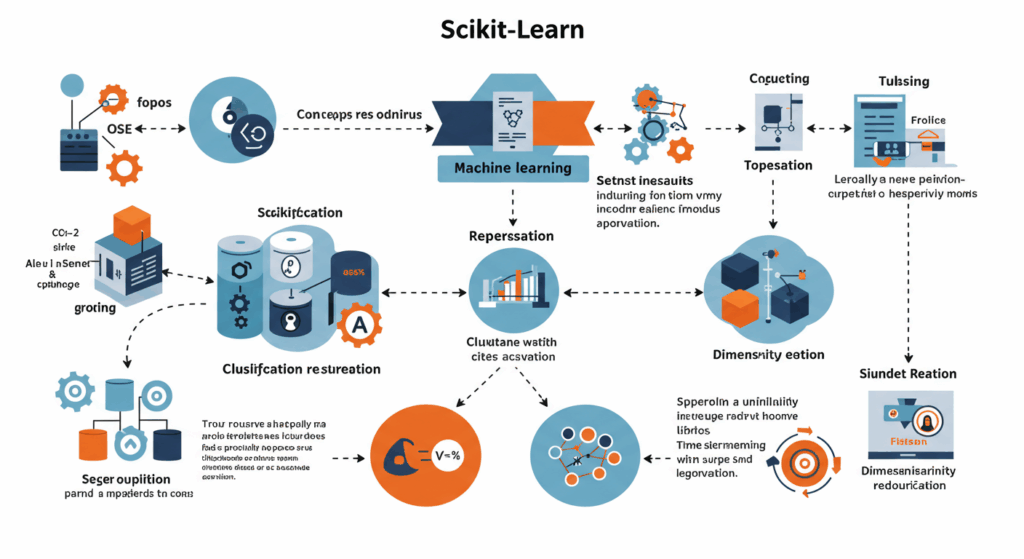
What it is: Scikit-Learn is a free, open-source Python library that has long been a cornerstone for classical machine learning (non-deep-learning) algorithms. Built on the SciPy ecosystem, it provides a unified interface to a wide range of algorithms for regression, classification, clustering, dimensionality reduction, and more (Top 15 Machine Learning Tools to Power Up Your 2024 Projects). It’s beloved for its clean API design (fit/predict paradigm) and well-documented implementation of ML algorithms.
Why it’s valuable: Scikit-learn is simple, reliable, and efficient for moderate-sized data and traditional ML tasks. It is favored for its simplicity and rich library of tools, making it perfect for quick prototyping and iterative development (A Comprehensive Comparison of the Best Machine Learning Frameworks for – Logics Technology Solutions Inc). The consistent API means you can switch out models (say, from a decision tree to a support vector machine) with minimal code changes. Scikit-learn also includes many utilities for data preprocessing, feature engineering, model evaluation, and hyperparameter tuning. While it doesn’t natively support GPU acceleration, it’s very optimized in C under the hood for CPU performance.
Best suited for: Scikit-learn is best for small to medium scale machine learning projects and as a learning tool. AI engineers often use it to build baseline models and for problems like tabular data analysis, where deep learning might not be necessary. For example, if you need a quick logistic regression or random forest classifier, scikit-learn’s implementation is hard to beat for ease of use. It’s also widely used in production for tasks like churn prediction or risk scoring when dataset sizes are manageable, due to its stability and the fact that it’s well-tested and trusted in the community (A Comprehensive Comparison of the Best Machine Learning Frameworks for – Logics Technology Solutions Inc).
4. Keras
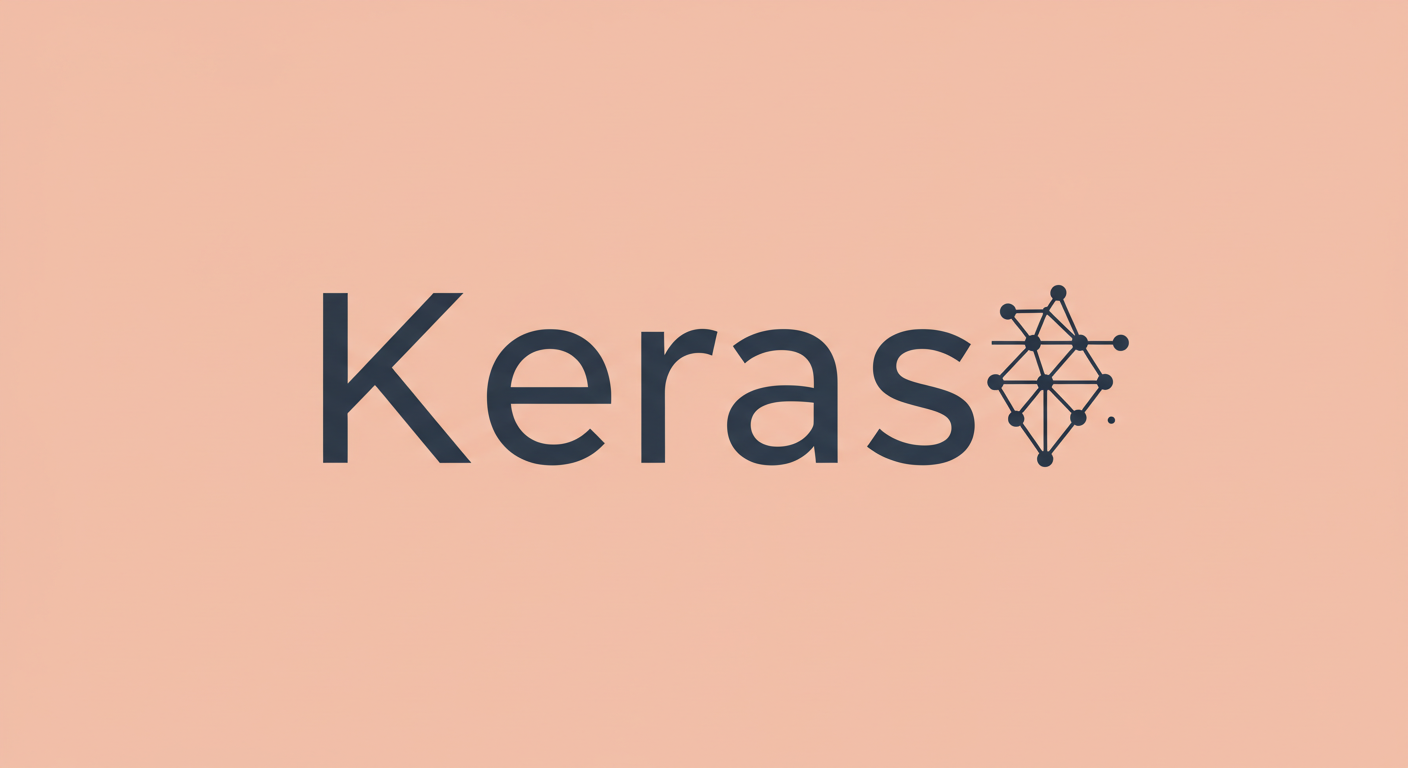
What it is: Keras is an open-source neural networks library that provides a high-level API for building and training deep learning models. It was originally an independent project but is now tightly integrated with TensorFlow (as tf.keras). Keras is designed to be user-friendly, modular, and extensible, abstracting away much of the complexity of lower-level frameworks (Top 10 Open Source AI tools in 2024).
Why it’s valuable: Keras is known for its clean and simple syntax, which lowers the barrier to entry for deep learning (Top 10 Open Source AI tools in 2024) (Top 10 Open Source AI tools in 2024). With Keras, you can define complex neural networks in just a few lines of code using a declarative style. It handles the heavy lifting of tensor operations, so you can focus on architecture and hyperparameters. The library also has excellent documentation and a large community, meaning lots of tutorials and examples are available. By simplifying model definition and training loops, Keras accelerates experimentation – one reason it’s widely used in academia and by beginners to quickly prototype models.
Best suited for: Keras is ideal for rapid prototyping of deep learning models and for educational purposes. If you need to stand up a convolutional neural network or an LSTM quickly to test an idea, Keras is a great choice. It’s especially popular in computer vision and NLP tasks for beginners; for instance, building an image classifier or a sentiment analysis model is very straightforward with Keras. While advanced users might drop down to pure TensorFlow or PyTorch for fine-grained control, Keras covers most use cases with much less code. In summary, Keras shines when ease-of-use and quick development are top priorities (Top 10 Open Source AI tools in 2024).
5. XGBoost
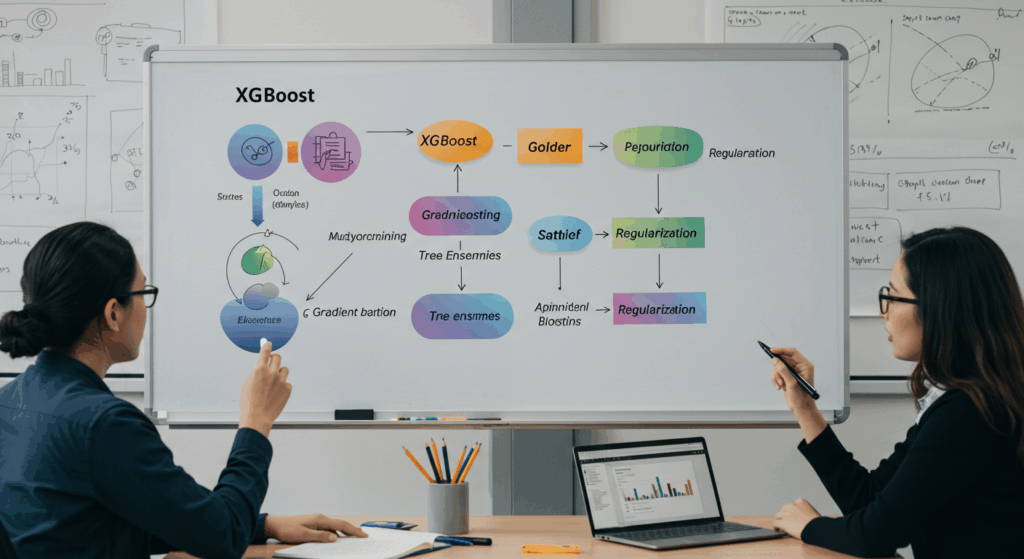
What it is: XGBoost (Extreme Gradient Boosting) is a highly optimized library for gradient boosting tree algorithms. It is open-source and became famous in the data science community for its winning performance in many machine learning competitions. XGBoost provides implementations in C++ with wrappers for Python, R, Java, and other languages (Top 15 Machine Learning Tools to Power Up Your 2024 Projects).
Why it’s valuable: Gradient boosting machines are powerful for structured/tabular data, and XGBoost is known for its speed and efficiency. It employs techniques like tree pruning, parallel computation, and hardware optimization to deliver fast model training and inference. Moreover, it’s sparsity-aware, handling missing values or sparse data gracefully (Top 15 Machine Learning Tools to Power Up Your 2024 Projects). XGBoost often achieves high accuracy with little tuning, thanks to sensible defaults and robust handling of overfitting (through regularization). It has become a go-to tool in industry and competitions for problems like regression or classification on tabular datasets (e.g. customer data, sensor readings) because it frequently outperforms or matches deep learning on those tasks with far less data and compute.
Best suited for: XGBoost is best for structured data machine learning, such as Kaggle competitions or enterprise analytics tasks. Use XGBoost when you have feature vectors and need a powerful predictor for regression or classification (e.g. predicting sales, credit risk, or user churn). It’s also useful as part of an ensemble – many winning solutions combine XGBoost with neural networks to cover both structured and unstructured data inputs. In essence, whenever you want a strong, fast baseline model for tabular data, XGBoost is an essential tool (Top 15 Machine Learning Tools to Power Up Your 2024 Projects). (Alternatives in this space include LightGBM and CatBoost, which offer similar boosting approaches with their own optimizations.)
6. Hugging Face Transformers
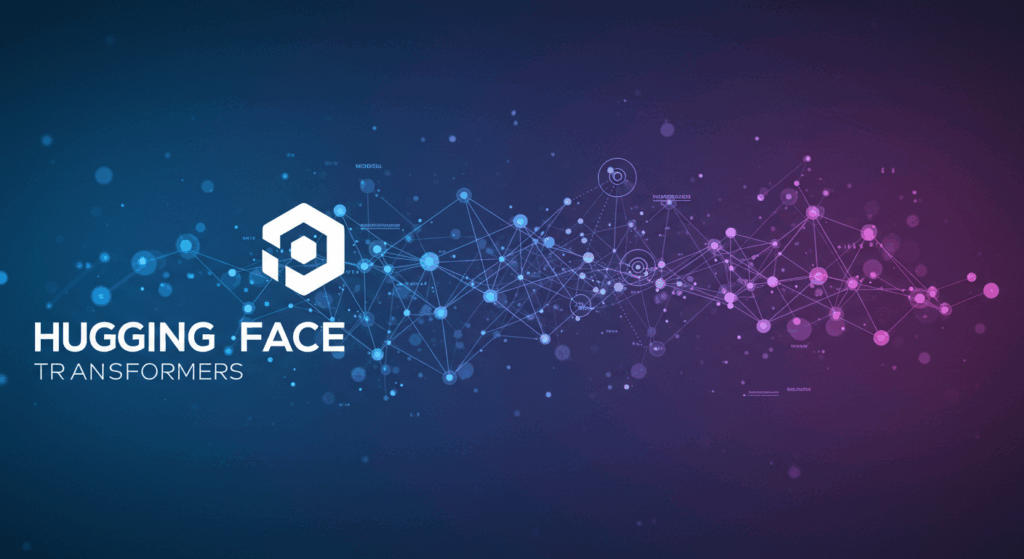
What it is: Hugging Face’s Transformers library is an open-source collection of state-of-the-art pre-trained models for NLP, computer vision, and more. It provides thousands of pretrained models (and architectures) – such as BERT, GPT, T5, Vision Transformers, etc. – that can be easily used for inference or fine-tuned on new data (Transformers – Hugging Face). The library is in Python and integrates with both TensorFlow and PyTorch backends.
Why it’s valuable: In the era of large pre-trained language models and generative AI, Hugging Face has become indispensable. It allows AI engineers to leverage cutting-edge models without training them from scratch. For example, with a few lines of code you can load a question-answering model that’s already trained on huge text corpora, and then fine-tune it on your company’s Q&A data. The library abstracts the details of tokenization, model architectures, and output decoding, so you can focus on your task. It also has an active hub (Hugging Face Hub) where the community shares models and datasets. This sharing culture and tooling accelerates development – if you need a model for translation, sentiment analysis, image captioning, etc., chances are someone has published one you can use. Hugging Face keeps pace with research, so it includes the latest models and often provides user-friendly implementations shortly after new papers come out.
Best suited for: Hugging Face Transformers is best for natural language processing tasks and any project involving large pre-trained models. It’s widely used for tasks like text classification, named entity recognition, summarization, machine translation, and also has growing support for vision (e.g. image classification, diffusion models) and audio. AI engineers should use this library whenever they can save time by fine-tuning an existing model instead of training from scratch. For instance, building a custom chatbot or an ML service with GPT-like capabilities is far easier using Hugging Face’s GPT-2/3 models (or interfaces to API) than trying to roll your own. In summary, the Transformers library brings cutting-edge model power off-the-shelf to engineers (Transformers – Hugging Face), making advanced AI accessible and faster to implement.
7. OpenCV
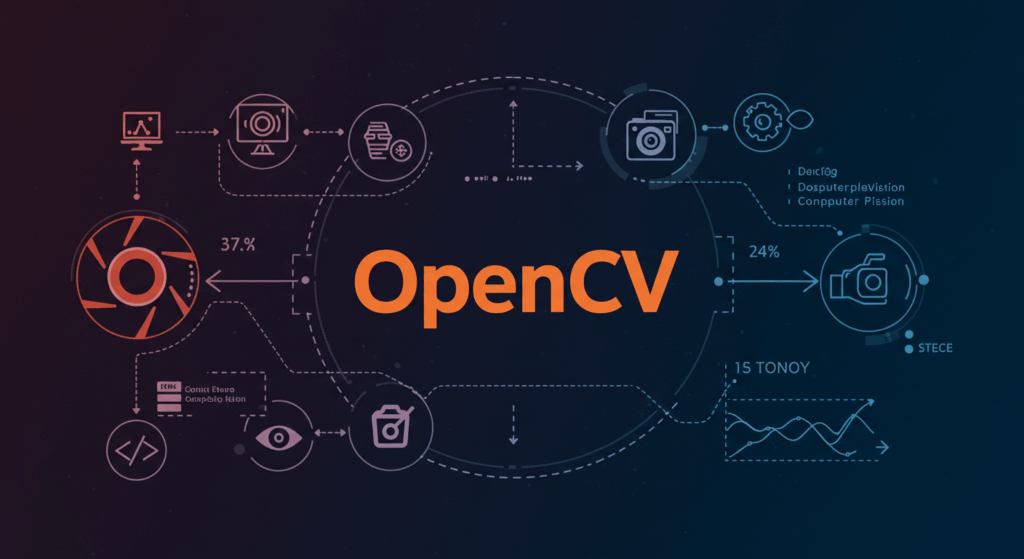
What it is: OpenCV (Open Source Computer Vision Library) is a long-standing open-source library of computer vision algorithms. It has C++ at its core and provides bindings for Python, Java, and others. OpenCV includes over 2500 optimized algorithms covering a wide range of vision tasks (Top 10 Open Source AI tools in 2024), from basic image processing (filtering, transformations) to more complex features like face detection, object tracking, and camera calibration.
Why it’s valuable: For any engineer working with images or video, OpenCV offers a treasure trove of optimized routines. It enables real-time image processing – a critical requirement for applications like video surveillance, robotics, or augmented reality. The library’s algorithms are highly optimized (many use SSE/AVX instructions and GPU/CUDA where available) enabling it to handle streams from cameras with minimal latency. OpenCV’s utility is not limited to classical CV; it’s often used in conjunction with deep learning models. For example, one might use OpenCV to quickly pre-process frames (resize, color convert) before feeding them into a neural network, or use it to draw bounding boxes and other annotations on images for the output. Its multi-language support also means you can deploy CV functionality in embedded systems (C++), on the web (via WebAssembly/JS), or in mobile apps.
Best suited for: OpenCV is best for computer vision tasks especially where real-time performance or legacy algorithm implementations are needed. Typical use cases include: image preprocessing, feature extraction (e.g. SURF/SIFT features), object detection using Haar cascades, video processing for tracking or optical flow, and even some machine learning (it has built-in classical ML models too). If you are building a robotics or AR application, OpenCV is almost mandatory for handling the vision pipeline (like stereo camera calibration and 3D reconstruction) (Top 10 Open Source AI tools in 2024). It’s also great for quick prototypes in CV — for instance, testing an idea like “detect circles in an image” can be done in a few OpenCV calls. In summary, OpenCV remains a vital tool for vision engineers, complementing learning-based approaches with efficient image processing.
8. H2O.ai Platform

What it is: H2O.ai provides an open-source machine learning platform (often just called H2O or H2O-3) focused on scalable machine learning and easy deployment. It’s a distributed, in-memory ML platform that supports many algorithms (regression, classification, clustering, deep learning) and includes an AutoML system. H2O can be used via R, Python, or a web UI, and it’s designed to handle big data by distributing work across clusters (Top 15 Machine Learning Tools to Power Up Your 2024 Projects).
Why it’s valuable: H2O.ai’s platform is known for combining power with accessibility. It can train models on large datasets that don’t fit in a single machine’s memory by spreading data across a cluster. At the same time, it offers an easy-to-use web interface (Flow) and integration with familiar tools (you can call it from Python using h2o library or from R). One standout feature is H2O’s AutoML: you can simply provide a dataset and target, and it will automatically try a variety of models (Random Forest, XGBoost, GLM, deep learning, Stacked Ensembles etc.), tune hyperparameters, and give you the best model. This is extremely useful for quickly benchmarking a problem or for non-experts to get started (Top 10 Open Source AI tools in 2024) (Top 10 Open Source AI tools in 2024). H2O also emphasizes interpretability and responsible AI, providing model explainability tools (like variable importance, SHAP values) out of the box. Being open-source, it’s free to use, with an enterprise version (Driverless AI) offering additional proprietary features.
Best suited for: H2O is great for enterprise AI applications where data is large and varied, and an automated approach can speed up model development. It’s often used in business analytics, finance, and healthcare for tasks like fraud detection, customer churn prediction, or risk modeling (Top 10 Open Source AI tools in 2024). An AI engineer might use H2O’s AutoML to rapidly identify a strong model for a given problem, then either deploy that model or use its results to guide a more manual modeling approach. It’s also suited for teams that want a unified platform: data scientists can experiment in the GUI while engineers can integrate the resulting model into production using the provided REST API or model artifacts. In summary, H2O.ai provides scalability and AutoML convenience, making it a valuable tool for tackling real-world data science problems that require both robustness and speed.
9. Rasa
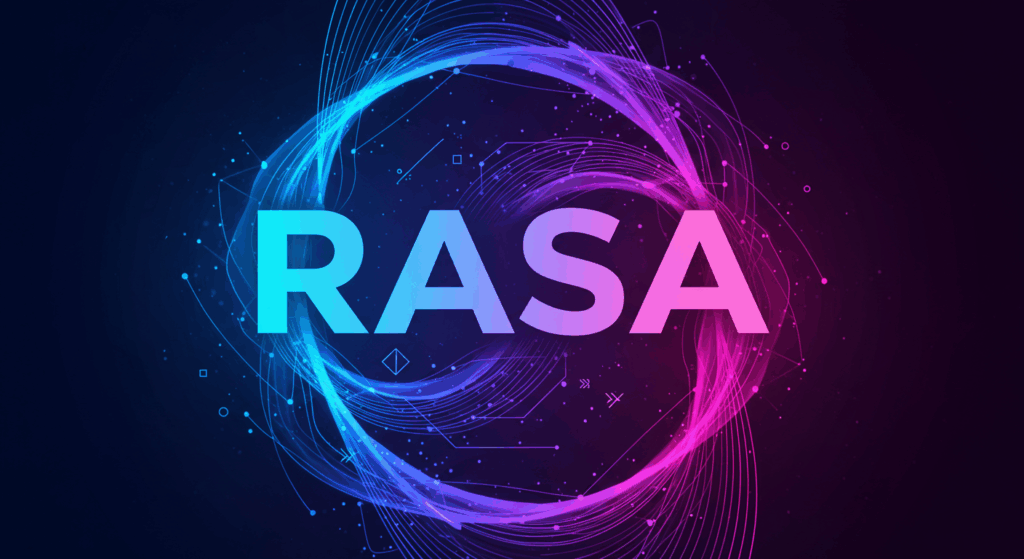
What it is: Rasa is an open-source framework for building conversational AI applications – primarily chatbots and voice assistants. It provides tools for natural language understanding (NLU) (intent classification and entity extraction from user messages) and dialogue management (handling multi-turn conversations and context) (Top 10 Open Source AI tools in 2024). Rasa has two main components: Rasa NLU and Rasa Core, which work together to let developers train custom conversational models and manage complex dialogue flows.
Why it’s valuable: Rasa enables AI engineers to create chatbots that are highly customized and can be deployed on-premises, which is important for data privacy and integration with internal systems. Unlike cloud NLP services, Rasa’s open-source approach means you have full control over training data and the conversation logic. It supports reinforcement learning for dialogue policies, allowing bots to improve through real conversations. Rasa comes with a rich set of pre-built components for common chatbot tasks and an active community sharing templates. It’s also modular – you can plug in your own NLP models if needed or integrate Rasa with external APIs. Essentially, Rasa provides the entire stack to go from scratch to a working conversational agent, including testing and training tools, so you don’t have to glue together multiple services.
Best suited for: Rasa is best for enterprise chatbots, virtual assistants, or any conversational AI where you need full control and the ability to handle complex dialogs. Common use cases are customer service bots, FAQ assistants, scheduling assistants, or conversational frontends to databases (“chat with your data”). For example, a bank can use Rasa to build a customer support chatbot that handles account inquiries, integrating it with their backend securely. Rasa shines in scenarios where off-the-shelf assistants (like Alexa, Dialogflow) are either too limiting or cannot be self-hosted. AI engineers choosing Rasa should be prepared to invest in training the NLU models on domain-specific data and crafting the dialogue rules or stories. When done right, the result is a highly tailored conversational agent without dependency on third-party providers (Top 10 Open Source AI tools in 2024) (Top 10 Open Source AI tools in 2024).
10. MLflow

What it is: MLflow is an open-source platform for managing the end-to-end machine learning lifecycle. Initially developed by Databricks, it tackles four key functions: experiment tracking, model versioning, reproducible ML runs, and model deployment. MLflow is framework-agnostic – you can use it with any ML library (scikit-learn, TensorFlow, etc.), which makes it a versatile part of the ML toolkit (Top 10 Open Source AI tools in 2024).
Why it’s valuable: In professional ML projects, keeping track of experiments (datasets, parameters, metrics, and code versions) is crucial. MLflow provides a simple API to log these details and a UI to compare runs. This means you’ll never wonder “which settings did we use to get that result?” – it’s all recorded. MLflow’s Model Registry then allows you to manage model versions, stage them (e.g. “staging” vs “production”), and add descriptions or approvals. It also offers easy packaging of models (for example, packaging a model as a REST-serving container or as a Python function) so that deployment is streamlined. Essentially, MLflow brings DevOps practices to ML, enabling reproducibility and collaboration. It’s valuable for teams because it standardizes how experiments and models are saved and shared. Being open-source, teams can host it themselves and integrate it with other tools (it can connect with Apache Spark, or you can use it in notebooks, etc.).
Best suited for: MLflow is best for machine learning projects that involve many experiments and deployments, i.e., most real-world AI engineering efforts beyond the simplest prototypes. If you are training numerous models or tuning hyperparameters, MLflow’s tracking lets you organize results systematically (Top 10 Open Source AI tools in 2024) (Top 10 Open Source AI tools in 2024). In a production setting, if you need to deploy models repeatedly or roll back to an older model, the model registry is incredibly helpful. Use MLflow when you want to ensure reproducibility and smooth transition from development to production. For example, a team working on a predictive maintenance model can log all their experiments in MLflow, pick the best model, and then deploy that model to a web service using MLflow’s deployment tools. This reduces the “it works on my machine” syndrome and fosters collaboration between data scientists and engineers. In short, MLflow is an essential tool for bringing order and reliability to the ML workflow (Top 10 Open Source AI tools in 2024) (Top 10 Open Source AI tools in 2024).
Overhyped Proprietary Tools to Be Wary Of
Even in enterprise settings, you don’t have to pay for closed-source platforms when open-source alternatives often outperform them. Here are some proprietary offerings that tend to be glorified marketing campaigns—and their free, open-source counterparts that laughably outshine them:
- Google Cloud AutoML
- Why it’s overhyped: Google’s AutoML hides the machine-learning pipeline behind a button, but you still get lock-in to GCP, opaque model internals, and hefty usage fees.
- Open-source champion:
auto-sklearnor FLAML — both automatically select and tune models on your own hardware, with full transparency and no vendor lock-in.
- DataRobot
- Why it’s overhyped: Promises “one-click ML at enterprise scale,” yet you’re stuck paying thousands per seat for what open-source AutoML libraries do for free.
- Open-source champion: AutoGluon — a fully managed AutoML toolkit from AWS Labs that handles tabular data, text, and vision out of the box, with results matching or beating DataRobot in benchmarks.
- IBM Watson Studio (Watson for Oncology, Watson NLU, etc.)
- Why it’s overhyped: Watson’s high-profile health projects famously underdelivered, and the studio’s NLU components often trail behind rapidly advancing open-source models.
- Open-source champion:
- For tabular and classical ML: scikit-learn with custom pipelines.
- For NLP: Hugging Face Transformers — openly maintained, cutting-edge models that you can inspect, fine-tune, and deploy yourself.
- Microsoft Azure Machine Learning Studio (Classic)
- Why it’s overhyped: Drag-and-drop modules seem friendly, but they obscure critical preprocessing steps and trap you in Azure’s ecosystem at significant cost.
- Open-source champion:
- Kubeflow + MLflow — end-to-end reproducible pipelines and experiment tracking you run on any Kubernetes cluster or even your laptop, with no per-node licensing fees.
- H2O Driverless AI
- Why it’s overhyped: Its “automatic feature engineering” is billed as magical, yet most transformations it performs are standard techniques you can implement yourself. Plus, the enterprise edition costs a premium.
- Open-source champion:
- H2O-3 (the free core platform) combined with AutoML frameworks like auto-sklearn or FLAML gives you similar (or better) performance without the price tag or proprietary constraints.
- Salesforce Einstein
- Why it’s overhyped: Marketed as an AI layer that “automatically” enhances your CRM, but it provides limited customization and still requires extensive data-science work behind the scenes.
- Open-source champion:
- Rasa or Botpress — full-featured, self-hosted conversational frameworks where you control intent models, dialogue policies, and data, free from per-message pricing.
Bottom line: If a tool touts magical, one-click AI solutions but keeps you chained to its cloud, it’s almost always worth investigating an open-source equivalent that gives you better performance, full transparency, and zero licensing fees.